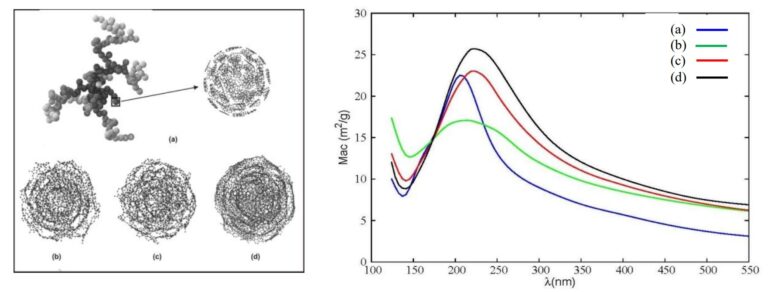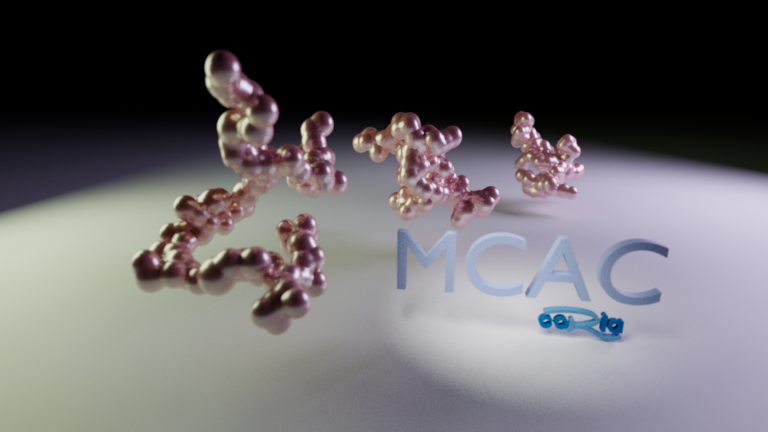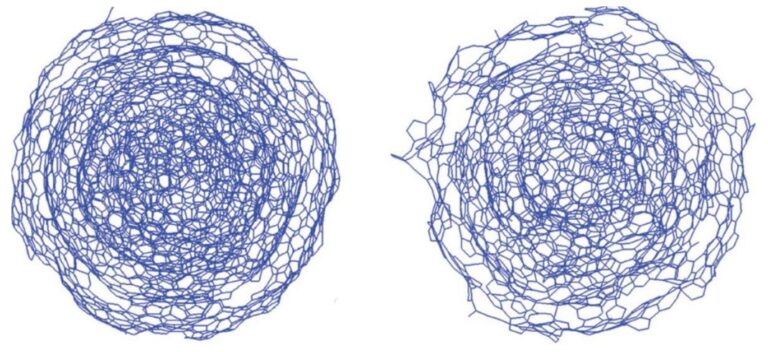Credits : France SIMONET/IRCELYON/CNRS Photothèque
Topic 6 :
THEORETICAL APPROACHES
As soot is a complex system, its modelling is not only based on the most recent theoretical developments but also gives rise to new approaches, both in the field of quantum chemistry and in that of classical simulations.
Theoretical approaches in every fields
Each of these approaches has its advantages. Ab initio methods are particularly well suited to the detailed study of reaction mechanisms and are effective for the study of the recombination of the first soot precursors (topic 1) as well as for the precise description of the reactivity processes on soot leading, for example, to adsorption on the soot particles and/or their oxidation (topic 2 and 3). However, their use is restricted to small systems composed of a few tens of atoms and to the very localised study of phenomena involving the formation or breaking of chemical bonds. To study larger systems, semi-empirical or DFT methods are used that explicitly include a contribution representing dispersion interactions.
Secondly, the study of non-reactive adsorption processes on soot is based on the use of a classical description of molecular interactions in numerical simulation codes of the Monte Carlo and molecular dynamics type. These methods appear to be ideal for characterising the adsorption phenomena on carbonaceous particles of several nanometres in diameter (Fig. 2).
We can also mention the development of mesoscale modelling in which the details of the atomic structure do not need to be specifically explained and which appear to be particularly well suited to studying the conglomerates of elementary soot particles and their evolution over time.
Similarly, theoretical approaches of the DDA (discrete dipole approximation) type can a priori enable the electromagnetic response of soot to be calculated as a function of its atomic characteristics (Fig. 3).
The objective today is twofold : on the one hand, to improve the description of primary soot particles by being able to take into account in the calculations atoms other than carbon (in particular the omnipresent oxygen atoms and, for example, the sulphur characteristic of certain fuels) and, on the other hand, to use statistical methods in order to take into account the variety of morphologies and grain size distributions in the calculations of the optical response of soot aggregates. A strong coupling between simulations and experiments is therefore necessary to ensure the relevance of the parameterisation of the models and to determine the observable physical quantities with the best sensitivity to differences in structure.



